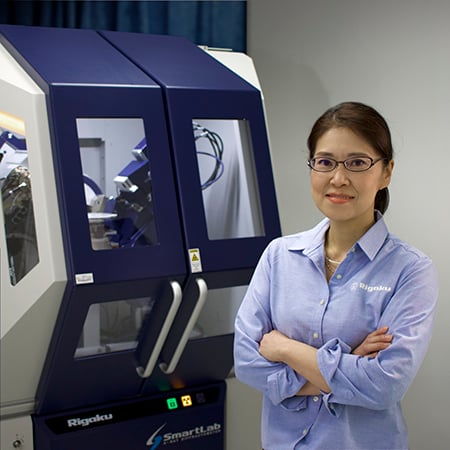Application Note BATT1028
Introduction
Excess lithium cathodes are attracting attention as a key to high capacity, but structural disorder and performance instability caused by excess lithium have been a challenge. In contrast to the local structural disorder that tends to be overlooked in conventional structural analysis, X-ray total scattering and PDF (Pair Distribution Function) analysis can quantify where excess lithium atoms move, how the surroundings are distorted, and how the distortion changes during charging and discharging by refining local pair correlation in addition to the average lattice parameters. and how that distortion changes during charging and discharging can be quantitatively understood. This deep real-space insight is essential to understanding and ultimately controlling the effects of excess lithiation on cathode stability and performance.
Crystal phase analysis
- Analysis: Cathode material
- Use: Optimizing electrochemical performance Crystal phase analysis
- Analyzed materials: LiCoO₂, LCO
Table 1: Interatomic distances by structural analysis type
| Analysis Method | Li - Li (Å) | Li σ (Å) | Disorder rate m |
| RMC | 2.82 | 0.11 | 0.017 |

Figure 1: Li-Li distance calculated from big box RMC

Figure 2: Peak width of Li-Li distance vs. each Li-Li distance σ
Conclusion
RMC analysis was performed on the PDF pattern of LiCoO₂ (LCO) to analyze the peak width (σ) corresponding to the Li-Li interatomic distance for each interatomic distance. As a result, it was confirmed that σ tends to increase as the interatomic distance increases. In general, the smaller σ is, the more stable and ordered the crystal structure is, and the larger σ is, the more disordered the structure is. Based on this relationship, the linear equation y (interatomic distance) = mx (σ) + c (zero-point vibration ≈ temperature factor) can be derived, and the disorder rate can be quantitatively evaluated from the slope m. Note that conventional single crystal structure analysis is limited to information on the average structure, but the RMC method can be used to extract such local structural changes. The quantitative information on the Li-Li distance obtained in this way may be used as an indicator to estimate the state of charge (SOC) of cathode materials and the amount of isolated particles that do not participate in charge-discharge cycles.

